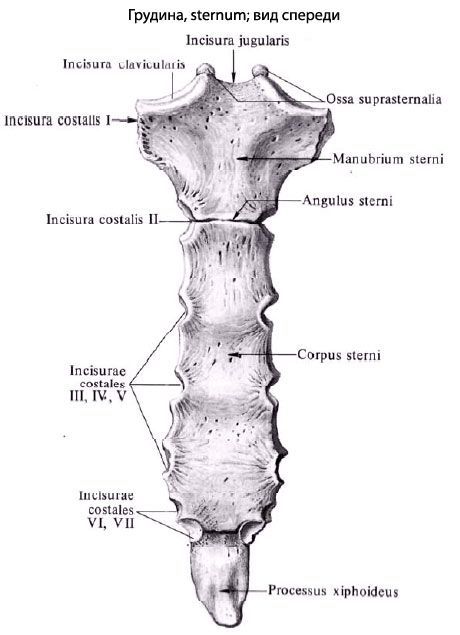Medical expert of the article
New publications
Breast
Last reviewed: 04.07.2025

All iLive content is medically reviewed or fact checked to ensure as much factual accuracy as possible.
We have strict sourcing guidelines and only link to reputable media sites, academic research institutions and, whenever possible, medically peer reviewed studies. Note that the numbers in parentheses ([1], [2], etc.) are clickable links to these studies.
If you feel that any of our content is inaccurate, out-of-date, or otherwise questionable, please select it and press Ctrl + Enter.
The sternum is a flat bone to which the ribs are attached on the right and left. The sternum has a manubrium, a body, and a xiphoid process. The manubrium of the sternum (manubrium sterni) is the widest and thickest upper part of this bone. On top of the manubrium there is an unpaired jugular notch (incisure iugularis), and on the sides of it there is a paired clavicular notch (incisitra clavicularis) for connection with the clavicles.

On the right and left edges of the manubrium below the clavicular notch there is a depression for articulation with the cartilage of the 1st rib. Even lower there is half of the notch, which, joining with a similar notch on the body of the sternum, forms the costal notch for the 2nd rib. The manubrium, joining with the body of the sternum, forms the angle of the sternum (angulus sterni), facing forward.
The elongated body of the sternum (corpus sterni) has costal notches on its edges for articulation with the cartilages of the true ribs. The costal notch for the 7th rib is located between the body of the sternum and the xiphoid process. The xiphoid process (processus xiphoideus), which is the lower part of the sternum, is sometimes bifurcated.

How to examine?


 [
[